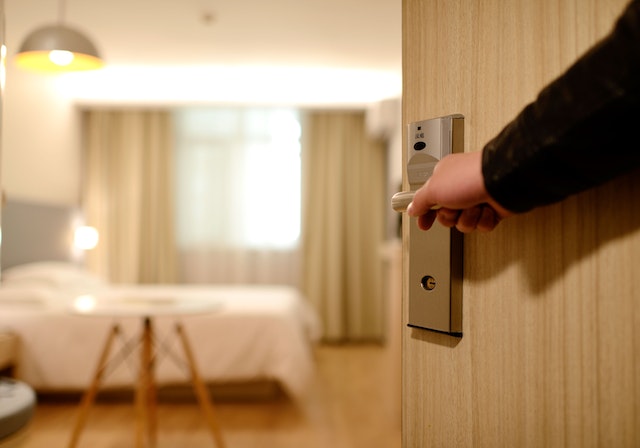Welcome to the exciting world of home building and design! Whether you’re a first-time homeowner or looking to create your dream abode, there’s nothing quite like the satisfaction of crafting a space that is uniquely yours. Building your own home gives you the freedom to bring your vision to life, from choosing the layout and materials to adding those personalized touches that make it truly special.
But where do you begin? With so many options and decisions ahead, it can be overwhelming. Fear not! In this blog post, we’ll guide you through the process of making and designing your own home. From getting started with planning and selecting a style that suits your preferences, all the way down to securing sliding door locks for added security – we’ve got you covered.
So grab a cup of coffee (or tea) and let’s dive in together as we explore how you can turn your dreams into reality by creating a space that reflects who you are while providing comfort, functionality, and peace of mind. Let’s get started on this incredible journey towards building the home of your dreams!
How to get started
Getting started on your home building and design journey is an exhilarating prospect. But before you jump straight into the construction phase, it’s crucial to lay a solid foundation through careful planning and preparation.
Establish a clear vision for your dream home. Think about what features are most important to you – do you crave open-concept living spaces or prefer more defined rooms? Consider factors such as the number of bedrooms, bathrooms, and any specific amenities or unique elements you’d like to include.
Next, set a realistic budget. Determine how much you’re willing to spend on both construction and design aspects of your project. It’s essential to strike a balance between quality and affordability while keeping in mind that unexpected expenses may arise along the way.
Once you have a vision and budget in place, it’s time to find suitable land or property for your new home. Research different neighborhoods or areas that align with your lifestyle preferences. Factors such as proximity to schools, workplaces, amenities, and natural surroundings can all influence your choice.
Engaging professional help is key during this stage too. Hire an architect who specializes in residential projects so they can understand your vision and translate it into practical designs that meet local building regulations.
Don’t forget about permits! Before breaking ground on your construction site, ensure that all necessary permits are obtained from local authorities. Compliance with legal requirements ensures smooth progress throughout the entire build process.
Lastly but certainly not least important: assemble a reliable team of builders who share your passion for creating exceptional homes. Look for experienced contractors with stellar reputations within the industry; their expertise will prove invaluable as they guide you towards making informed decisions every step of the way.
By following these initial steps diligently – envisioning what kind of space speaks directly to you personally; establishing financial boundaries but remaining flexible; researching locations carefully; seeking professional guidance when needed; ensuring compliance with legalities; assembling trustworthy individuals -you’ll be well-equippedto embark on your journey of building and designing a home that not only reflects your style
The different types of homes you can build
When it comes to building a home, the options are endless. From traditional houses to modern marvels, there is a style that can suit every taste and budget.
One popular choice is the classic single-family home. This type of house offers plenty of space for families with multiple bedrooms, bathrooms, and living areas. It’s perfect for those who value privacy and want their own piece of land to call home.
Another option is the townhouse or row house. These homes are typically attached to one another in a row or block formation. They often have multiple floors and share common walls with neighboring units. Townhouses are great for people who want a more urban lifestyle without sacrificing space.
If you’re looking for something more unique, consider building a log cabin or timber frame home. These rustic structures offer charm and character that can’t be replicated by other construction methods. With their exposed beams and natural materials, they provide a cozy retreat from the busyness of everyday life.
For those who prefer an eco-friendly approach, an energy-efficient home might be the way to go. These houses incorporate sustainable materials and technologies to minimize their environmental impact while maximizing energy efficiency.
If you’re feeling adventurous, you could even consider building an unconventional home like a dome house or shipping container dwelling. These alternative designs push the boundaries of traditional architecture and offer creative solutions for housing needs.
No matter what type of home you choose to build, it’s important to carefully consider your needs and preferences before making any decisions. Take into account factors such as location, size, layout, and style when designing your dream abode!
How to design your home
When it comes to designing your own home, the possibilities are endless. You have the freedom to create a space that truly reflects your personal style and meets your specific needs. But where do you start? Here are some tips to help you get started on designing your dream home.
First, consider the layout of your home. Think about how you want each room to flow into the next and how you plan on using each space. Are you someone who loves entertaining guests? Then an open concept living area might be perfect for you. Or maybe you prefer more privacy and separate spaces for different activities.
Next, think about the overall aesthetic of your home. Do you want a modern and minimalist look or something more cozy and rustic? Consider color schemes, materials, and textures that will help create the atmosphere you desire.
Don’t forget about functionality! It’s important to design a home that not only looks good but also functions well for everyday life. Think about things like storage solutions, lighting options, and furniture placement.
Don’t be afraid to seek inspiration from various sources such as magazines, websites, or even nature itself. Take note of designs or elements that catch your eye and incorporate them into your own vision.
Designing your own home is an exciting journey full of creativity and self-expression. Enjoy every step along the way as you bring your dream home to life!
Use sliding door locks for your home
Use sliding door locks for your home to enhance security and keep your loved ones safe. Sliding doors are a popular choice for modern homes as they offer great views and allow abundant natural light into the living space. However, their unique design can present challenges when it comes to securing them.
To ensure that your sliding doors are properly secured, investing in high-quality sliding door locks is crucial. These locks are specifically designed to fit on sliding doors and provide an added layer of protection against intruders.
One type of sliding door lock is the surface-mounted lock, which attaches directly onto the face of the door frame. This type of lock is easy to install and provides a visible deterrent to potential burglars.
Another option is a mortise lock, which requires cutting out part of the door frame to accommodate the locking mechanism. While this may require professional installation, mortise locks offer superior security and durability.
Additionally, you can consider installing auxiliary locks such as pinning or track locks for extra reinforcement. Pinning locks prevent anyone from lifting the door off its tracks while track locks secure both panels together at multiple points along the track.
Remember that proper maintenance is essential for keeping your sliding door locks in optimal condition. Regularly clean and lubricate them to ensure smooth operation and longevity.
Using quality sliding door locks will give you peace of mind knowing that your home is well-protected against unwanted entry attempts. Invest in these effective security measures today!
Tips for building your own home
Tips for building your own home
Building your own home can be an exciting and rewarding experience. It allows you to have complete control over every aspect of the design and construction process. However, it’s important to approach the project with careful planning and consideration. Here are some tips to help ensure a successful build:
1. Set a realistic budget: Before you begin, determine how much you can afford to spend on your new home. Consider factors such as land costs, materials, labor, permits, and unexpected expenses.
2. Research building codes and regulations: Familiarize yourself with local building codes and regulations to avoid any costly mistakes or delays during the construction process.
3. Hire professionals when needed: While taking on some tasks yourself may save money, certain aspects of homebuilding require professional expertise. Consult architects, engineers, contractors, or other specialists when necessary.
4. Choose quality materials: Invest in high-quality materials that will withstand the test of time. Selecting durable materials not only ensures longevity but also reduces maintenance costs in the long run.
5. Plan for energy efficiency: Incorporate energy-efficient features into your design from the beginning. This includes insulation, efficient windows and doors, proper ventilation systems, and renewable energy options like solar panels.
6. Prepare for future needs: Consider your future lifestyle and potential changes in family dynamics when designing your home layout. Make sure there is enough space for expansion or modifications if required down the line.
7. Communicate openly with contractors: Effective communication is key throughout the entire building process.
Work closely with contractors to ensure they understand your vision while being open to their suggestions based on their expertise.
8. Be flexible but firm with design choices: As you move through each stage of construction,don’t be afraid to make adjustments if necessary.
However,it’s important to strike a balance between flexibility,and staying firm about what matters most regarding design elements that align with,your personal preferences.





